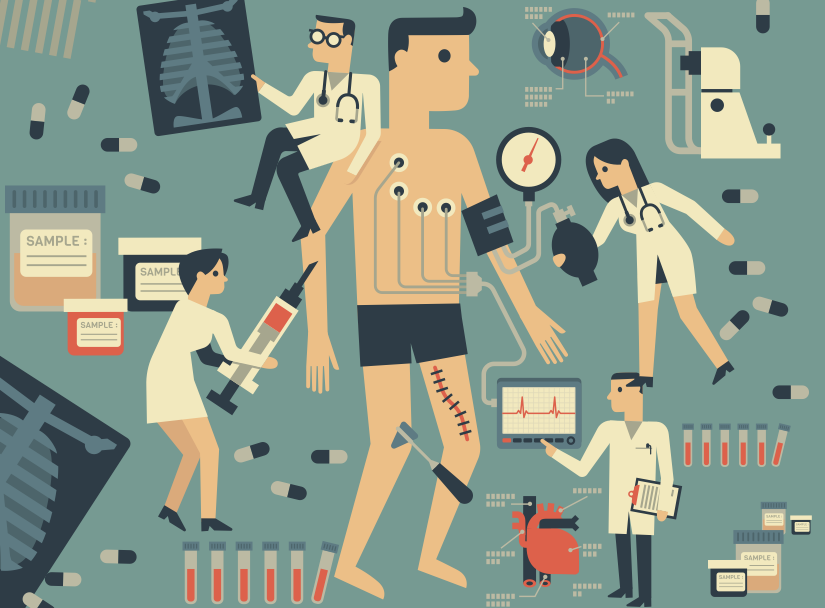Modern medicine has achieved remarkable feats in detecting diseases earlier and more accurately than ever before. Yet, paradoxically, this very progress has spotlighted a growing concern: overdiagnosis. This refers to the diagnosis of conditions that, if left undetected, would never have caused symptoms or harm during a person’s lifetime. While distinct from misdiagnosis (getting the wrong diagnosis), overdiagnosis poses significant challenges, potentially leading to unnecessary treatments, heightened patient anxiety, and escalating healthcare costs without clear clinical benefits.
Understanding the nuances of overdiagnosis is crucial for both healthcare professionals and the public to navigate the complexities of contemporary healthcare wisely.
What Exactly is Overdiagnosis?
Imagine finding a tiny, slow-growing tumor on a scan that, statistically, poses virtually no threat of becoming dangerous. Or diagnosing very mild hypertension or slightly elevated cholesterol in an individual at low overall risk, prompting medication that offers minimal benefit but carries potential side effects. These are potential examples of overdiagnosis.
It occurs when diagnostic systems identify abnormalities—often indolent or biologically insignificant—that meet diagnostic criteria but are unlikely to impact a patient’s healthspan or quality of life. This phenomenon is particularly relevant in cancer screening (e.g., certain thyroid cancers, prostate cancer identified via PSA screening, ductal carcinoma in situ [DCIS] in breast screening) and for conditions with expanding diagnostic thresholds.
Key Drivers Fueling Overdiagnosis
Several converging factors contribute to the rise of overdiagnosis:
- Technological Advances: Highly sensitive imaging techniques (like CT, MRI, PET scans) and biomarker tests can detect increasingly subtle abnormalities. While powerful, these tools often uncover “incidentalomas”—findings unrelated to the initial reason for the test—many of which are harmless but trigger further investigation and potential anxiety.
- Changing Diagnostic Criteria: Expert panels periodically revise diagnostic guidelines, sometimes lowering the thresholds for defining diseases like hypertension, gestational diabetes, or chronic kidney disease. While often well-intentioned (aiming for earlier intervention), this can label more people as “sick,” subjecting them to monitoring and treatment, even if their absolute risk of harm was initially low.
- Cultural and Societal Pressures:
- Fear of Missing Out (FOMO) / Fear of Litigation: Clinicians may practice defensive medicine, ordering more tests to avoid missing a diagnosis, however unlikely, and to protect against potential malpractice claims.
- Patient Expectations: Empowered by information (and sometimes misinformation), patients may demand specific tests or treatments, believing that “more is better.”
- “Disease Mongering”: Pharmaceutical and diagnostic companies may subtly promote conditions or broaden definitions to expand markets for their products.
- Influence of Media and Social Media: Health information is widely available online, but quality varies dramatically. Social media platforms can amplify health anxieties (“cyberchondria”), leading individuals to seek testing based on self-assessed symptoms. Furthermore, awareness campaigns, while valuable, can sometimes inadvertently increase fear and demand for screening without fully communicating the risks of overdiagnosis.
- Systematic Screening Programs: While population screening programs save lives (e.g., cervical cancer screening), some programs may lead to significant overdiagnosis alongside benefits. The challenge lies in optimizing screening intervals and target populations to maximize benefit while minimizing harm.
The Real-World Consequences
Overdiagnosis is not a benign issue; it carries tangible consequences for individuals and the healthcare system:
For Patients:
- Overtreatment: Diagnosing a harmless condition can lead to unnecessary interventions—surgery, medication, radiation—each carrying its own risks of side effects, complications, and financial burden.
- Psychological Harm: Receiving a diagnosis, even for a low-risk condition, can cause significant anxiety, fear, and distress. The label of being a “patient” can negatively impact self-perception and quality of life.
- Financial Burden: Even with insurance, patients face costs related to diagnostic tests, treatments, follow-up appointments, and potential time off work.
For Healthcare Systems:
- Increased Costs: Overdiagnosis drives up healthcare expenditure through unnecessary tests, treatments, specialist consultations, and long-term monitoring.
- Resource Drain: Human resources (clinician time, pathologist workload) and infrastructure (imaging machines, operating rooms) are consumed by managing overdiagnosed conditions, potentially diverting resources from patients with more pressing needs.
- Distraction from High-Value Care: Focusing on low-risk or non-progressive conditions can detract from efforts to manage genuinely serious illnesses and promote preventive health measures with proven benefits.
Navigating Towards a Balanced Approach
Addressing overdiagnosis requires a multi-faceted strategy involving clinicians, researchers, policymakers, and patients:
- Refining Diagnostic Guidelines: Incorporating the potential for overdiagnosis when developing or updating diagnostic criteria and screening recommendations.
- Promoting Shared Decision-Making: Engaging patients in open conversations about the potential benefits *and* harms of diagnostic tests and treatments, including the possibility of overdiagnosis and overtreatment.
- Improving Risk Communication: Clearly explaining absolute risks and benefits, rather than just relative risk reductions, helps patients make more informed choices.
- Investing in Research: Focusing research on better distinguishing harmless abnormalities from potentially lethal ones (e.g., identifying biomarkers for aggressive vs. indolent tumors).
- Public and Clinician Education: Raising awareness about overdiagnosis to foster critical thinking about the “more is better” assumption in healthcare.
Conclusion: Seeking Health Wisely
Overdiagnosis represents a critical challenge at the heart of modern medicine’s success. While early detection remains a cornerstone of effective healthcare for many conditions, the drive to find disease ever earlier must be balanced against the potential harm of diagnosing conditions that may never cause illness. Recognizing the drivers and consequences of overdiagnosis allows us to move towards a more nuanced, evidence-based, and patient-centered approach—one where medical intervention truly adds value to people’s lives, ensuring that the pursuit of health doesn’t inadvertently lead to harm.
Disclaimer: This article provides general information and discussion about medical issues. The information provided is not intended and should not be construed as medical advice. If you have specific medical concerns, please consult with a qualified healthcare provider.


